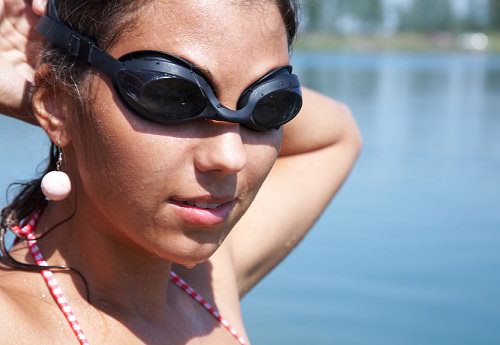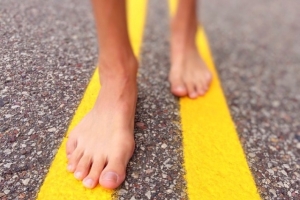How to Avoid Panic in Open Water Swim
The sport of triathlon, consisting of three separate legs of swimming, biking, and running of various distances, has become more popular lately. Many established runners have added the additional disciplines of swimming and biking to their running efforts, either to compete in triathlon events or to achieve a total cross-training fitness regime.
Most training occurs in a swimming pool, following the black line at the bottom of the pool lap after lap, with no one else nearby, and a chance to rest for a moment or two at the turn end. Sometimes the swim portion of an event is in a pool but more often occurs in an open water setting, such as a lake, river, or even the ocean. One snag many athletes encounter is a sense of discomfort or even panic during this part of the event. If an athlete is to encounter difficulty during a triathlon, it is more likely to occur at this stage than any other. The primary issue is a sense of being kicked, trampled, or pushed in the water, especially at the beginning. Many participants never make it to the bike and run for not being able to complete the swim.
Here are some strategies for the beginning or even intermediate-level triathlete to help cope. First, practice some swimming prior to the event in an open water venue; if this is not possible, try your pool swims without touching the wall at turns, just to get the sense of swimming the full distance without a stop. If wearing a wet suit for the event, make sure you have had a chance to practice swimming in the suit before the actual event (but not in a chlorinated swimming pool). Same with goggles – make sure they fit comfortably. Don’t try anything new the day of the event. Set your mental attitude as well; you only need to finish the swim, not set any speed records. Keep in mind also that the triathlon director’s goal is to keep everyone safe and to that end will have safety officials placed in the water in boats or kayaks to follow swimmers throughout the course.
Read also – 4 Signs You’re on the Right Track in Life
Mass start
If the swim is a “mass start,” i.e., everyone starting at the same time, stay off to one side away from the crowd. Once the swim starts, make your way slowly to stay on course, letting other faster swimmers get ahead. Remember, your goal is to finish the swim and move on to the bike and run, not to set any speed records. If the start is in “waves,” with swimmers starting in groups (usually by age), the same rule as above applies. Let the faster swimmers get where they’re going. Stay out of the way!
Find your groove and settle into it
Once swimming, find your groove and settle into it. You won’t have a black line to follow but you will have some sort of buoy or marker line to follow. Focus on swimming from buoy to buoy just to break the swim up into manageable segments. As much as possible, try to stick to your normal breathing pattern. Look up from time to time to make sure you’re staying on track and not drifting too far from the markers. At this point, the swimmers should be fairly spread out and the feeling of panic at being trampled should have passed.
When approaching the end, think of how good it will feel to get out of the water, out of that tight wetsuit, and onto the bike. Once you can stand in the water at the end, walk don’t run to the shore. You may have a slight feeling of dizziness or disorientation so take it easy. Pat yourself on the back for having finished the first third of the event.
Nothing is quite as satisfying as training for a challenging event such as a triathlon. Don’t let fear or anxiety hold you back. Have you ever taken part in triathlon? How did you cope with panic in open water swim?



